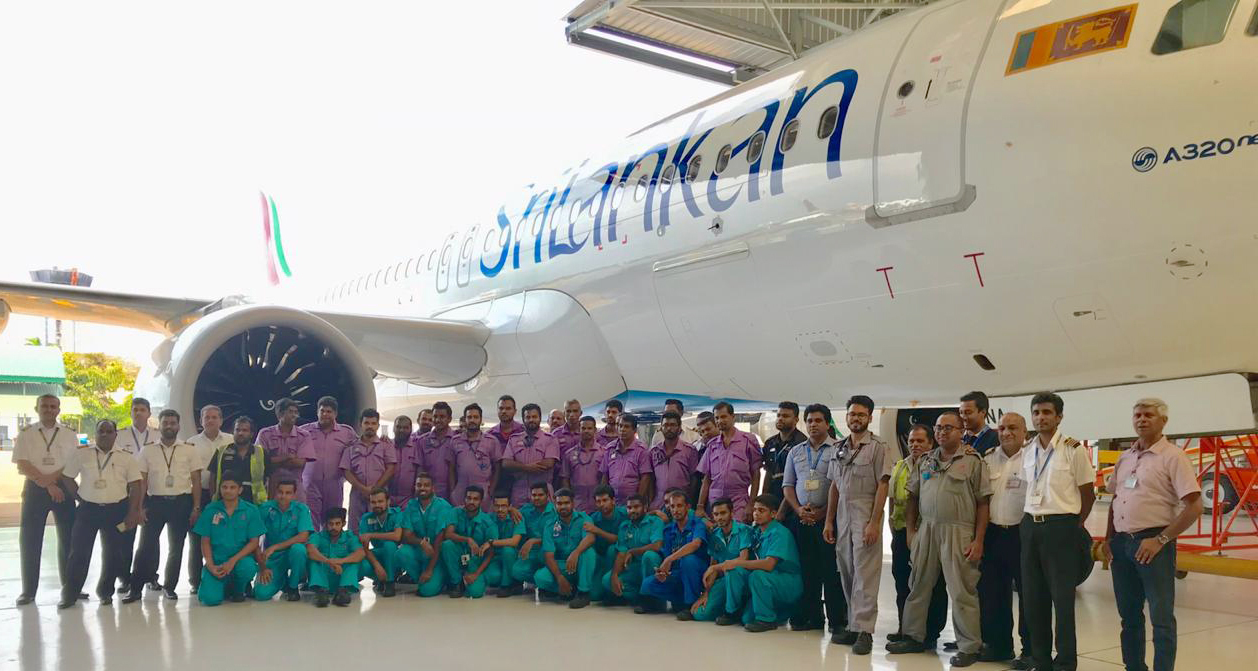Colombo, February 12 2019: SriLankan Engineering, the aircraft Maintenance-Repair-Overhaul (MRO) arm of Sri Lanka’s national carrier, achieved another milestone when it successfully carried out its first C-check on an Airbus A320neo aircraft of the SriLankan Airlines fleet at its main hub at Colombo’s Bandaranaike International Airport (BIA).
D.A.G. Jayasuriya, Chief Technical Officer of SriLankan Airlines said: “Our team of experienced aircraft engineers proved its capabilities once again with this excellent performance. The on-time completion within the planned four day period ending on 5
SriLankan Engineering holds certifications from the European Aviation Safety Agency (EASA) to carry out Base Maintenance operations on aircraft of the Airbus A320 and A330 families as per EASA Part-145 specifications. It also possesses EASA certifications for its Line Maintenance and Engineering Workshops, and carries out EASA certified Training.
Its main facility at BIA recently underwent a significant modernization programme that included enlargement of the floor area in its main hangar to allow more aircraft to be served simultaneously; and enclosing of the main hangar with a hangar door to allow programmes to be carried out in any type of weather. Significant enhancements were also carried out on its A320 aircraft hangar.
The C-check, which is a maintenance programme carried out every 4,000 flying hours of an A320 aircraft, was completed on aircraft 4R-ANA, the first A320neo to join the SriLankan fleet. The ‘neo’ – which stands for New Engine Option – is a range of aircraft from Airbus Industrie that are among the most sophisticated in the sky, incorporating a number of advanced features in comparison to the earlier generation of aircraft. The SriLankan fleet includes two A320neo and four A321neo aircraft, all of which are medium-range aircraft, together with its fleet of long haul A330 aircraft.
The neo aircraft have been designed to provide significantly lower fuel consumption and lower operating costs through more modern engines, aerodynamic refinements, large curved winglets (sharklets) and weight savings. They also feature cabin improvements such as more passenger seats, larger hand luggage spaces and an improved air purification system, as well as reduced engine noise levels and a significantly increased flying range.
SriLankan’s route network covers 111 cities in 48 countries. As a member of the oneworld global airline alliance, SriLankan also connects its passengers to oneworld’s worldwide network of more than 1,000 destinations in 160 countries.

Corporate Communications
SriLankan Airlines
www.srilankan.com
SriLankan.com uses cookies and 3rd-party services to offer you a better, more personalized, browsing experience with advanced accessibility enhancements. By continuing to browse SriLankan.com you agree to SriLankan Airlines Terms of Use, Cookie Policy and Privacy Policy.